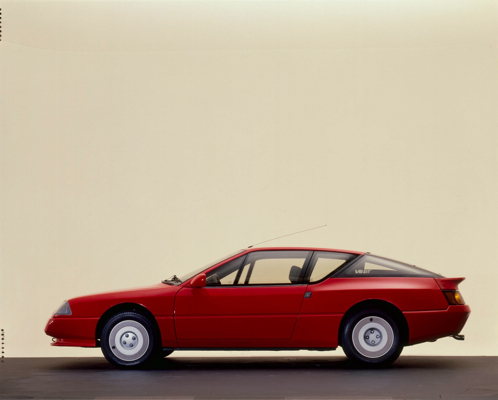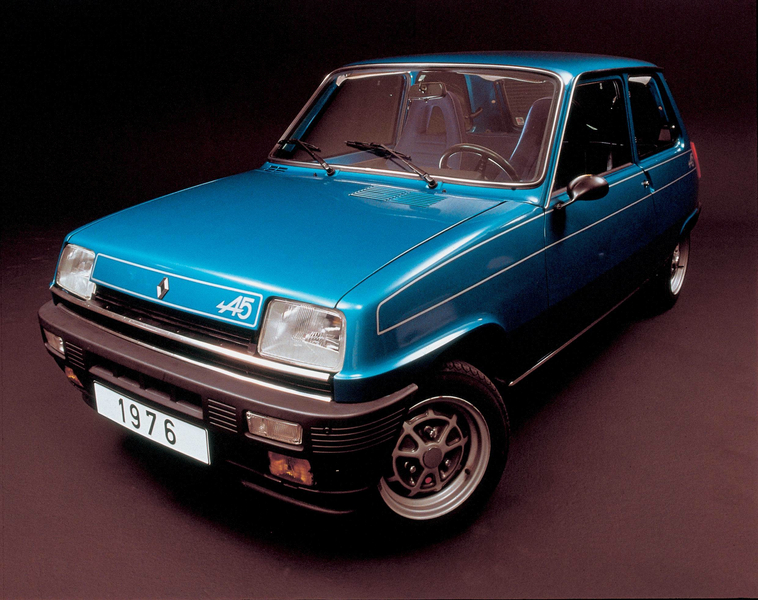|
Send this page to a friend! Fill in the form bellow | ||
news
Renault and Caterham Co-Developing Production A110-50
Renault RenaultFrance, 1898 > present189 models
RenaultFrance, 1898 > present189 models
6052 photos
17 videos
and Caterham CaterhamUnited Kingdom, 1973 > present9 models
CaterhamUnited Kingdom, 1973 > present9 models
354 photos
1 video
are working together to develop a production version of the Alpine A110-50 Renault Alpine A110-50France, 2012 > 20128 photos
Renault Alpine A110-50France, 2012 > 20128 photos
2 videos
concept, which was shown earlier in the summer. Caterham will develop the car from its Caterham Technology and Innovation division that offers engineering help to outside companies. Caterham has four divisions: Caterham Cars, Caterham F1 Caterham CT01United Kingdom, 2012 > 20125 photos
Caterham CT01United Kingdom, 2012 > 20125 photos
, Caterham Technology and Innovation and Caterham Composites.
"The platform layout is now finished. This is a car that must appeal to the emotions," said Renault COO Carlos Tavares.
Tavares had previously said that Renault would only produce an Alpine sports coupe if it could find a partner to share in its development costs.
There are no other details about the car at the moment. It is highly unlikely that the production version will use the race-based V6 that was in the concept.
Caterham recently hired the former head of Renaultsport F1 Cyril Abiteboul as its new CEO, which should lead to a good relationship between the two companies.
Alpine A106
In 1954, Jean Rédélé and his friend Louis Pons achieve a victory at the Coupe des Alpes with a tuned 4CV. In memory of this event he chooses the name "Société des Automobiles Alpine" for his new founded company with which he develops cars on his own. He starts off with the Alpine A 106, which is a show stopper at the Paris Salon in 1954. The designation A 106 is derived from Renault's engine designation system.Alpine A108
The A 108 is introduced in 1958 as convertible, in 1959 follows a version with fixed hardtop. It is based on the Renault Dauphine. The A 108 Berlinette Tour de France of 1960 is, with its low weight of just 530 kg, the ideal car for racing and rallies. It not only wins numerous trophies, it also provides the DNA for the legendary A 110 model that comes up next in the Alpine pedigree.Alpine A110
In 1962, the Paris audience sees for the first time the new Alpine A 110. It uses many componets of the R8. With its extremely flat body design and lightweight construction, the A 110 becomes an icon on the rally tracks. With success, the cooperation between Alpine and Renault intensifies, Alpine models are now sold by Renault traders and the small manufacturer becomes the official Renault rally works team.Alpine A310
But in the 1970s the tides turn. The Alpine A 310 model is introduced at the Geneva Show 1971. Alpine had spend its entire budget on the development of a replacement for the A 110, but the debut timing couldn’t be worse. With the petrol crisis hitting the car markets in 1973, the demand for sports cars is very low and Renault eventually steps in to take over its struggeling junior-partner.Renault Alpine GT
As Renault aquires Alpine in 1973, its influence over the development of Alpine sports cars increases. The result is on display at the Geneva Motor Show in early 1985: the Alpine GT.The V6 unit now provides 116 kW/158 hp and at 235 km/h, the Alpine GT is the fastest car from the Renault Group. For the first time, Renault is the official manufacturer of an Alpine sports car.
Renault 5 Alpine
The acquisition of Alpine also broadens Renault's possibilities when it comes to modifications of street cars. By the end of 1975 arrives the Renault 5 Alpine with 93 hp. Built from tuned Renault components, the tiny car accelerates in ten seconds to 100 km/h and with a weight of just 840 kg, its top speed stands at 173 km/h. Within just seven years, more than 70.000 the Renault 5 Alpines find their buyers.Renault Alpine A 610
The last Alpine model produced is the A 610. When Renault decides to abandon the Alpine badge in 1994, 849 units of the model have been build. The A 610 was only available with a turbo engine that delivered 250hp and accelerated the car to a maximum 265 km/h. With the A 610 ends the Alpine-era at Renault. Today, the Alpine factory in Dieppe is used to produce Renault models.Renault Alpine A110-50
To celebrate the 50th anniversary of the Alpine A110 in 2012, Renault design boss Laurens van den Acker created a concept for a modern Alpine. The Alpine A110-50 takes its styling from the Renault Dezir concept car. Van den Acker reworked the front end to look more like the classic Alpine A110 including LED fog lights that evoke the original car.Source: Autocar
Encyclopedia | Engine V 6 Displacement 213 cu in Top Speed -- Transmission 6, sequential manual Maximum power 360 hp Type Fixed-head coupé Fuel Petrol Fuel consumption (combined) -- | price -- annual ownership cost -- |
Contribute
more about Renault



latest news





























